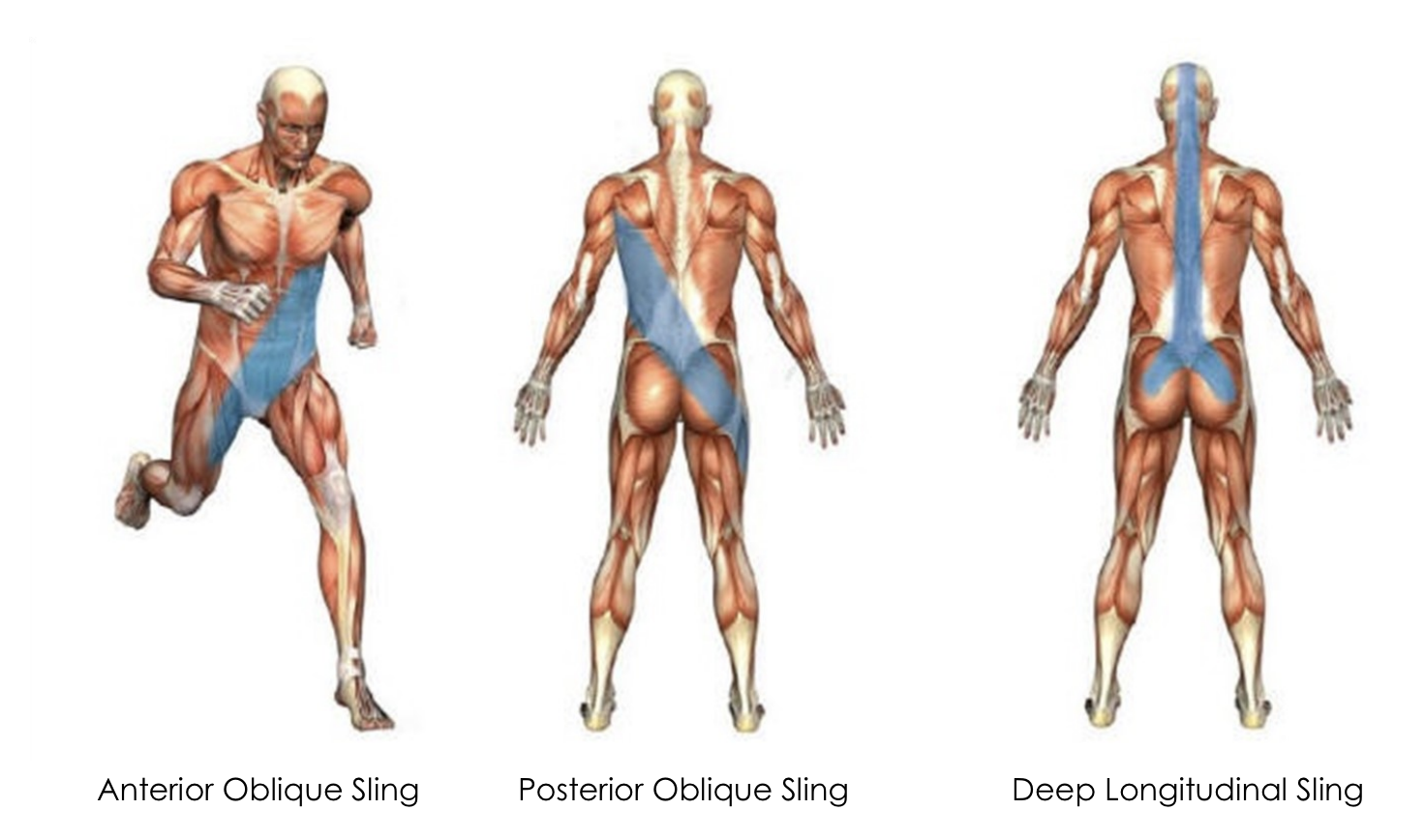How We Stretch?
And Why?
You probably already know how important stretching is for the body, and you probably realize how much better you feel when you complete a stretch routine. So let's discuss what occurs in the body while stretching and why we should stretch regularly. Stretching regularly means every day or two.
Have you ever cooked chicken and noticed that every piece is wrapped in tissue that resembles a white sack? Well, that tissue is called myofascial tissue. It surrounds muscles so that the muscle fibers won't come apart. Human muscles are made the same way. We feel tight when this tissue is tight and tight tissue restrains muscle fiber movement and blood circulation. Myofascial tissues form links throughout your body, and this means that if it is tight in one place of the link you might feel pain at the other end of the same link. Various links are demonstrated in blue in the images below. For instance, I've seen at the gym that when a person rolls their shoulders, they usually have pain in the back of a knee.
As I said earlier, when a muscle is tight, its blood circulation is restricted. Blood brings oxygen (energy) and micro and macro elements to your tissues, and we need all these resources for our muscles to recover as quickly as possible from physical activity. That is why flexible people recover and progress faster. When muscle tissue is flexible and pliable, the risk of injuries is lower.
Now that we know why stretching is so important let's explore safe and effective stretching methods. Stretching should not be painful. The only thing you need to feel while stretching is your muscles being stretched without any pain or excessive discomfort. Don't be too hard on yourself; just do a little bit every day, as progress should be steady and gradual. A general recommendation is to start with 10 seconds per set and bring it up to 30 seconds. Please check out our next article, Static vs Dynamic Stretches to learn more about stretching techniques and to see videos with stretching techniques, please click on the following link: Stretches & Posture.

.png)
Comments
Post a Comment